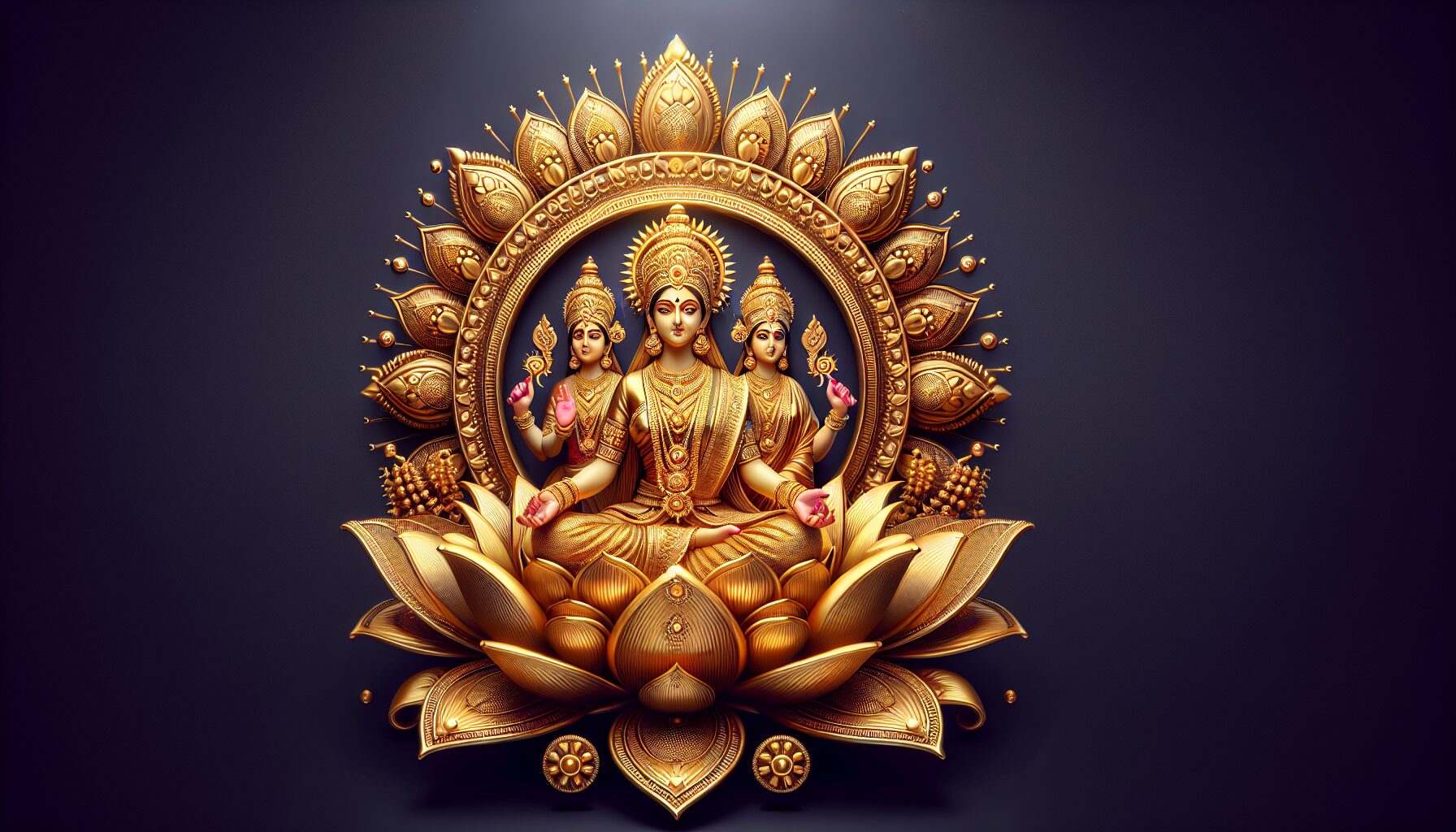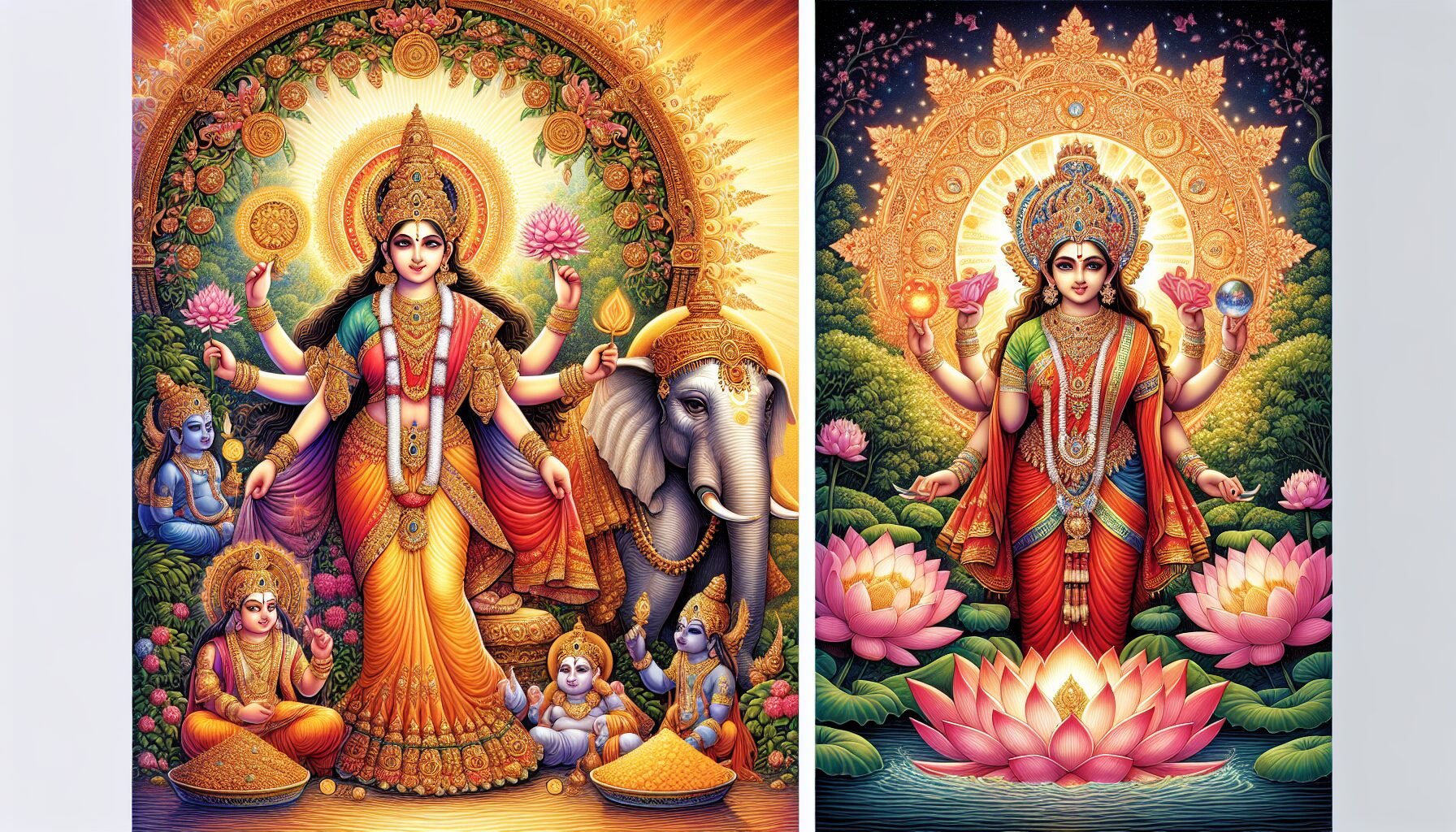Have you ever wondered about the different manifestations of Lakshmi, the Hindu goddess of wealth and prosperity? Well, two of her widely recognized forms are Shridevi and Padma. Shridevi represents the eternal energy of Lakshmi and is depicted as a radiant goddess, while Padma embodies her association with beauty and purity. In this article, we will explore these two fascinating manifestations and discover the unique qualities and symbolism they hold. So, join us on a journey as we unravel the mystical world of Shridevi and Padma and gain a deeper understanding of the divine aspects of Lakshmi.
Table of Contents
Manifestations of Lakshmi as Shridevi
Introduction to Shridevi
Shridevi is one of the many manifestations of the Hindu goddess Lakshmi. She is revered as the goddess of wealth, prosperity, and beauty. Shridevi, also known as Sri or Sri Lakshmi, is believed to bring joy, abundance, and good fortune into the lives of her devotees. As an embodiment of grace and elegance, she holds a significant place in Hindu mythology and is worshipped with great devotion.
Goddess of Wealth and Prosperity
Shridevi is primarily known as the goddess of wealth and prosperity. She is often depicted holding a lotus flower in one hand, symbolizing purity, and a pot of gold in the other, representing abundance. It is believed that her blessings can bestow material wealth, success, and financial stability upon her devotees. Through her divine grace, Shridevi fulfills the desires and shower blessings of those who seek her aid in attaining prosperity and well-being.
Adorned with Divine Beauty
Shridevi is renowned for her extraordinary beauty and radiance. She is often depicted as a resplendent goddess adorned with exquisite jewelry, vibrant garments, and a mesmerizing aura. Her enchanting appearance captivates all who behold her, evoking a sense of awe and reverence. The divine beauty of Shridevi symbolizes the allure and magnificence of wealth and abundance, reminding devotees of the blessings she brings into their lives.
Symbolism of Shridevi
Shridevi embodies various symbolic representations. Her association with wealth signifies the importance of material prosperity in the lives of individuals. However, she also serves as a symbol of spiritual wealth, emphasizing the significance of inner abundance and contentment. The lotus flower and the pot of gold in her hands symbolize purity, fertility, and the attainability of material and spiritual abundance. Shridevi’s symbolism encourages individuals to seek a harmonious balance between material and spiritual aspects of life.
Associations with Vishnu
Shridevi is intrinsically connected with Lord Vishnu, the preserver and protector of the universe. In Hindu mythology, she is considered to be his eternal consort and resides with him in the realm of Vaikuntha. The union of Shridevi and Vishnu represents the perfect harmony between wealth and righteousness. Their divine partnership symbolizes the inseparable relationship between prosperity and moral values, highlighting the importance of using wealth for the greater good and the well-being of all.
Stories and Legends
Numerous stories and legends highlight the significance of Shridevi in Hindu mythology. One popular tale revolves around her emergence from the milky ocean during the churning of the cosmic ocean by gods and demons. In this mythological event known as Samudra Manthan, Shridevi appeared in all her glory, bestowing her blessings and bringing forth abundance and prosperity for the world. This story signifies her divine presence and her role in promoting prosperity in the universe.
Significance in Festivals
Shridevi’s manifestations are celebrated and worshiped with great enthusiasm during various Hindu festivals. The most notable among these is Diwali, the Festival of Lights, where devotees invoke her blessings by lighting lamps and offering prayers. During this time, people decorate their houses and places of business, hoping to attract Shridevi’s grace and blessings for a prosperous and joyful year ahead. Other festivals such as Navaratri and Akshaya Tritiya also hold special significance in the worship of Shridevi.
Worship and Devotion
Devotees of Shridevi express their reverence and seek her blessings through dedicated worship and devotion. Many perform daily rituals, such as lighting incense, offering flowers, and reciting prayers, to express their gratitude and seek her divine intervention. Temples dedicated to Shridevi are adorned with elaborate decorations and host grand ceremonies to honor her. Individuals also establish personal altars or spaces within their homes for daily worship, inviting her presence into their lives.
Mantras and Prayers
Mantras and prayers play a vital role in invoking the presence and blessings of Shridevi. One of the most popular mantras dedicated to her is the Sri Sukta, a sacred hymn believed to be composed by the sage Vishwamitra. Reciting this mantra with devotion and sincerity is believed to attract wealth, prosperity, and well-being. Devotees also chant various other mantras and prayers specific to Shridevi, seeking her guidance and blessings in different aspects of their lives.
Benefits of Invoking Shridevi
Invoking the blessings of Shridevi can bring numerous benefits to individuals. Her divine presence and grace are believed to bring financial stability, success in endeavors, and overall prosperity. She is also revered as the bestower of happiness, peace, and spiritual growth. By invoking Shridevi and embracing her teachings, devotees can cultivate a sense of abundance, gratitude, and mindful wealth management, leading to a balanced and fulfilling life.

Manifestations of Lakshmi as Padma
Introduction to Padma
Padma is another significant manifestation of the goddess Lakshmi. As the goddess of lotus and divine beauty, Padma holds a special place in Hindu mythology and spiritual traditions. She is associated with purity, creation, and transformation. Through her symbolization of the lotus flower, Padma represents the potential for growth, enlightenment, and spiritual evolution.
Goddess of Lotus and Divine Beauty
Padma is often depicted seated or standing on a fully blossomed lotus flower, symbolizing her connection to beauty and spiritual awakening. Just as the lotus emerges from the muddy waters to bloom into a pristine flower, Padma represents the journey from darkness to enlightenment. Her divine beauty reflects the purity, grace, and serenity that can be attained through spiritual practice and inner transformation.
Symbolism of Padma
Padma’s symbolism extends beyond the lotus flower itself. Just as the lotus closes at night and opens with the sunrise, Padma signifies the cyclical nature of creation, growth, and renewal. The lotus also represents detachment and transcendence as it remains untouched by the impurities of its surrounding environment. This symbolism encourages individuals to rise above worldly attachments and seek spiritual enlightenment, transforming their lives and reaching a state of higher consciousness.
Associations with Creation and Transformation
Padma’s association with the lotus brings forth her connections to creation and transformation. The lotus is believed to emerge from the naval of Lord Vishnu, and its unfolding petals symbolize the birth of the universe. Padma represents the creative energy that gives life to all beings and the potential for transformation and growth within every individual. Her presence inspires devotees to embrace change and embark on a spiritual journey towards self-realization and inner awakening.
Stories and Legends
Several stories and legends highlight the significance of Padma in Hindu mythology. One such tale recounts the creation of the universe, depicting Padma’s manifestation from the naval of Lord Vishnu as he rested on the cosmic waters. Her emergence symbolized the birth of life and the beginning of creation. Another popular legend associates Padma with the goddess Saraswati, emphasizing her connection to knowledge, wisdom, and artistic expression.
Significance in Hindu Mythology
Padma’s significance in Hindu mythology is further emphasized by her representation in various religious texts and scriptures. She is mentioned in the Rigveda, one of the oldest Hindu scriptures, where she is celebrated as a symbol of beauty, purity, and fertility. Padma is also revered in the Puranas, revered ancient texts that illustrate mythological stories and provide spiritual guidance. These references deepen the understanding and reverence for Padma among her devotees.
Representation in Art and Iconography
Padma’s representation in art and iconography is abundant, illustrating her importance and popularity among devotees. She is often depicted with four arms, holding a lotus flower, a symbol of purity, in each hand. The elegant and serene posture of Padma reflects her divine grace and spiritual significance. In sculptures and paintings, she is adorned with exquisite jewelry and magnificent garments, signifying her status as a goddess of beauty and grace.
Padma in Different Hindu Texts
Padma’s manifestation and symbolism are mentioned in various Hindu texts, including the Vishnu Purana and the Padma Purana. Both texts elaborate on her origins, characteristics, and symbolism, adding depth and understanding to her devotees’ worship and devotion. These texts also provide guidance on the rituals and practices associated with invoking Padma’s blessings, enabling devotees to establish a closer connection with her.
Padma as a Spiritual Symbol
Beyond her physical representation, Padma holds a spiritual significance for those seeking inner transformation and enlightenment. The lotus’s journey from darkness to light represents the spiritual path, where devotees strive to rise above the mundane and embrace spiritual growth. Padma serves as a reminder that just as the lotus blooms beautifully despite its muddy origins, individuals have the potential to overcome challenges and obstacles, attaining spiritual purity and realizing their true selves.
Worship and Devotion to Padma
Devotees express their reverence and seek blessings from Padma through dedicated worship and devotion. Similar to other manifestations of Lakshmi, individuals establish personal altars or visit temples dedicated to Padma. They offer prayers, recite mantras, and perform rituals to honor and establish a connection with her divine energy. Through these practices, devotees cultivate devotion, gratitude, and a deeper understanding of Padma’s teachings and significance in their lives.
In conclusion, Shridevi and Padma represent two significant manifestations of the goddess Lakshmi. Shridevi embodies wealth, prosperity, and divine beauty, while Padma symbolizes creation, transformation, and spiritual evolution. Both manifestations hold immense importance in Hindu mythology and traditions, guiding devotees towards a harmonious life filled with abundance, inner growth, and spiritual enlightenment. By understanding and embracing the teachings and symbolism of Shridevi and Padma, individuals can invite their blessings and experience the transformative power of these divine goddesses in their lives.
